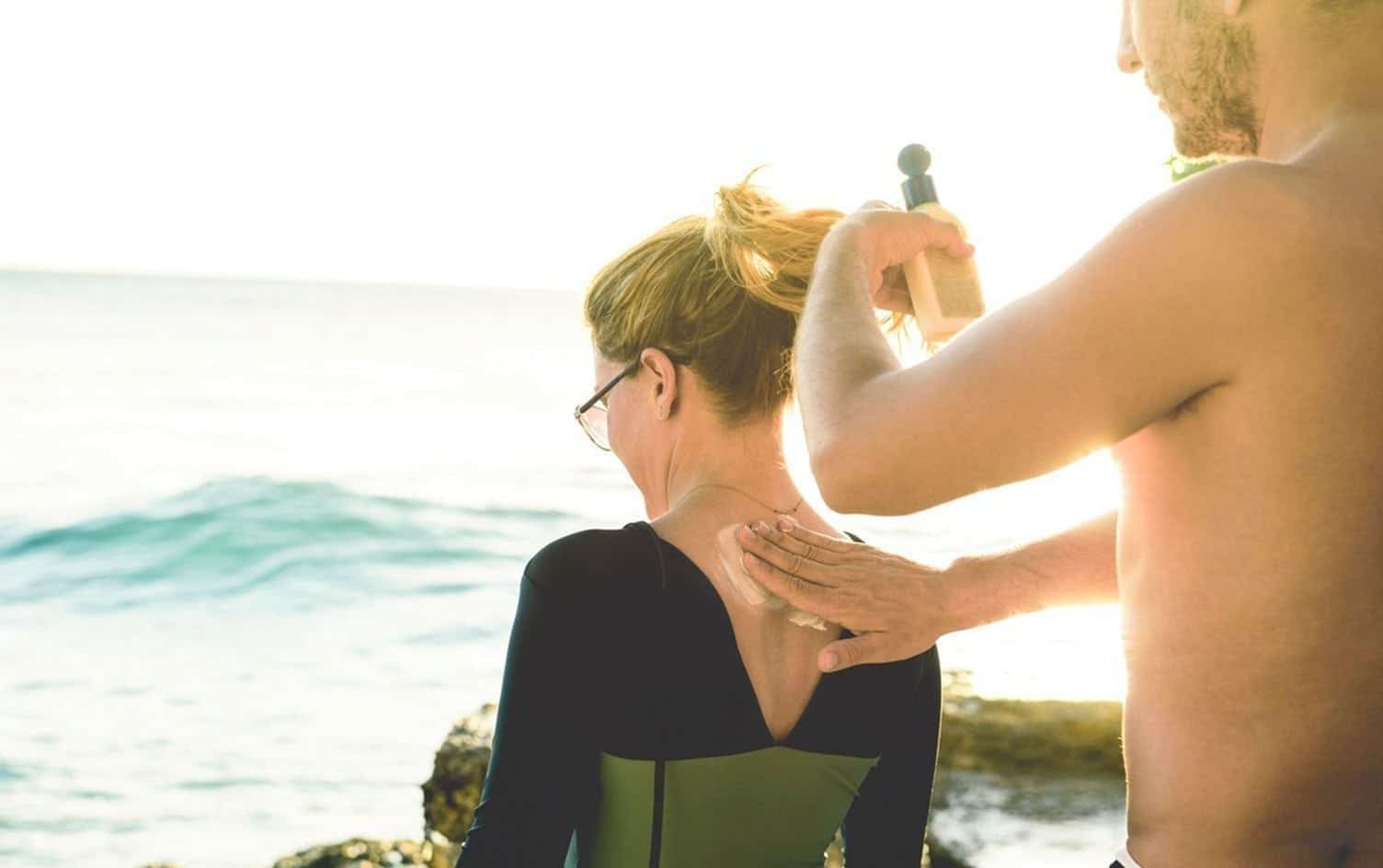Some of the hallmarks of summer — flip flops, sunshine, the beach and the ocean — also cause significant confusion. We talked to the experts to keep you from falling for common summertime health myths.
MYTH #1: SUNSCREEN PROVIDES ADEQUATE PROTECTION FROM THE SUN’S RAYS
Fact: Sunscreen is a summer staple but slathering on SPF doesn’t provide total sun protection.
“While sunscreen can be important, especially if these other options aren’t available, it should not be thought of as your first line of defense against the sun’s rays,” says Rick Alteri, MD, medical editor for the American Cancer Society. “No matter how high the sunscreen’s SPF is, some of the sun’s rays will get through, which is why it’s important to take other measures to protect yourself.”
Alteri suggests wearing protective clothing, a wide-brimmed hat, sunglasses that block UV rays and seeking shade, especially from 10 a.m.–3 p.m. when the sun is most intense.
To maximize sunscreen’s effectiveness, read the label and follow the directions, paying special attention to how often it should be reapplied.
MYTH #2: FLIP FLOPS ARE THE IDEAL SUMMER FOOTWEAR
Fact: Flip flops may pair perfectly with shorts, dresses and bathing suits, but the flimsy footwear lacks proper support.
“[Flip flops] lack support so prolonged walking can aggravate problems such as heel pain and plantar fasciitis,” says podiatrist James Christina, DPM, CEO and executive director of the American Podiatric Medical Association.
In some cases, wearing flip flops can be even more serious. More than 25,000 people ended up in the ER with flip-flop related injuries in 2014, according to data from the Consumer Product Safety Commission.
For lounging around the pool or hanging out at a backyard barbeque, flip flops are just fine, but Christina suggests more supportive shoes like sneakers for longer walks or sports activities, noting, “It’s easy to trip and fall or twist and injure [your] foot or ankle if [you’re] doing any running or similar sports activities.”
MYTH #3: YOU MUST WAIT 30 MINUTES AFTER EATING BEFORE SWIMMING
Fact: There is no scientific evidence that swimming on a full stomach causes cramps or increases the risk of drowning.
Blood is diverted to your digestive tract after a big meal but there is still plenty of blood flow to your arms and legs to allow you to swim safely, so go ahead and take a dip.
READ MORE > TORCH CALORIES WITH THIS SIMPLE 30-MINUTE SWIMMING WORKOUT
MYTH #4: YOU SHOULD DRINK MORE WATER DURING THE SUMMER
Fact: As temperatures rise, it’s tempting to think your water intake should, too.
A 2016 report from the National Center for Health Statistics found men drank an average of 14 eight-ounce glasses of water every day while women drank almost 12 eight-ounce glasses of water daily — more than enough to stay hydrated even during the heat of summer.
“Your hydration needs vary depending on height, weight, nutrition and activity level,” says Faisal Tawwab, MD, with MultiCARE Physicians in Orlando, Florida. “Unless you are losing ample amounts of hydration via sweat, you will probably be just fine continuing your regular water routine.”
Tawwab’s advice: If you feel thirsty, drink. If you sweat a lot, drink. If your urine is dark, drink. Stick with water over calorie-laden sports beverages to keep your calorie intake in check.
WATCH > FIT TIPS: EASY WAYS TO HYDRATE (THAT AREN’T WATER)
[bc_video video_id=”5549994634001″ account_id=”5415335156001″ player_id=”rJuKveaLb”]
MYTH #5: URINE EASES THE PAIN OF A JELLYFISH STING
Fact: If you’re unlucky enough to be stung by a jellyfish — it happens to approximately 200,000 people in Florida annually, according to the National Science Foundation — don’t bother asking your BFF to pee on the wound.
A 2017 study published in the journal Toxins found that urine is ineffective for reducing the pain. It could actually make the pain worse. Popular remedies like lemon juice and shaving cream are also useless. The research showed a combination of vinegar and heat was the best remedy — and less likely to create any awkwardness with your friend.




